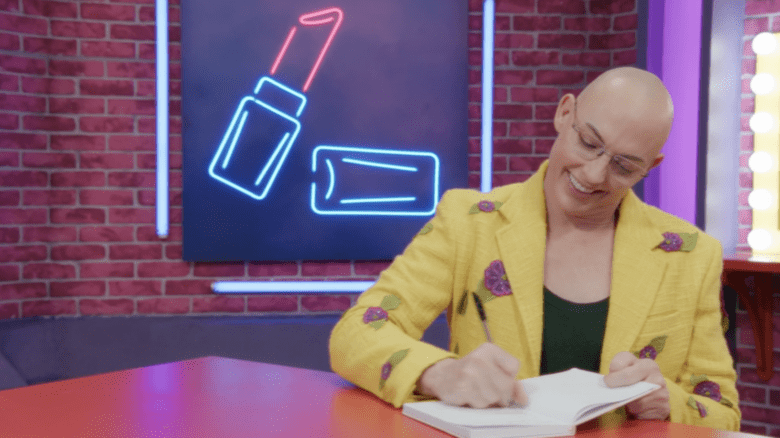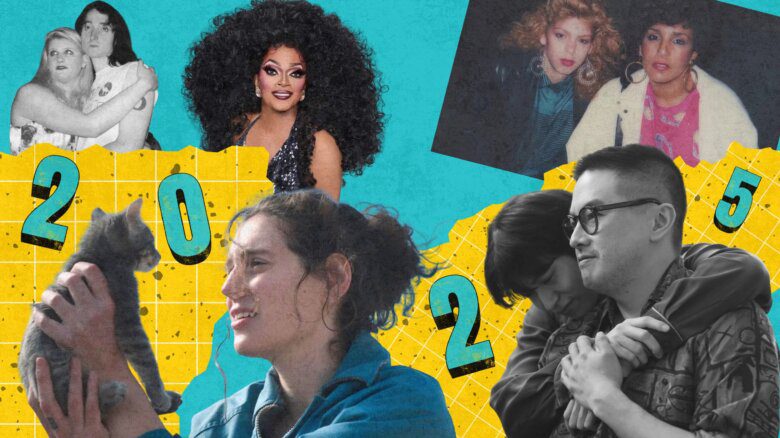Blockorama, the all-day dance party celebrating black queer pride, is celebrating its 10th year as a fixture of Toronto’s Pride weekend. This year’s edition takes over George Hislop Park on Sun, Jun 29.
To mark the anniversary Blockorama’s organizers — a committee called Blackness Yes! — are pulling out all the stops with performances from surprise out-of-town guests as well as local stalwarts. (For details check out Xtra’s Ultimate Pride Guide in this issue.) Then, in case you haven’t packed enough dancing into the day, there will be a designated Blockorama room at Circa as part of the Pride afterparty, which also features cover guy DJ Jamal.
Blockorama now commands its own stage at the Pride festivities, but its debut in 1998 was much smaller in scale.
“A group of people from the African diaspora queer community came together and said, ‘We should have a float so that black people can see themselves at Pride,'” says Syrus Marcus Ware, who’s been helping to organize Blockorama for the past three years. “They had missed the deadline so they said, ‘How about we camp out at Wellesley parking lot, have some friends DJ and make it an informal stage?'”
A decade later Blockorama has grown from a couple of impromptu hours in a parking lot into an all-day dance party that draws a massive turnout. “It’s kind of hard to measure but I’d definitely say we had about 10,000 throughout the day, if not more,” says fellow organizer Nik Redman of last year’s event.
Redman — aka DJ Nik Red — spun at Blockorama’s inaugural party and has been involved ever since. “I think it’s wonderful we’ve moved to George Hislop Park,” he says. “When it was initiated it was built on this whole idea of a block party, and it’s turned into one huge block party. It will be interesting to see what it looks like in a park setting.”
Ware says Pride has come a long way in terms of encompassing the diversity within the queer scene, but he adds there are lingering stereotypes of who queers are and who they aren’t.
“There can be a perception that gay, bi, queer, trans, lesbian people are white, and that homophobia lives within particular racialized communities,” says Ware. “Blockorama challenges that.”
He adds that Blockorama harkens back to Pride’s beginnings. “If you go back to Stonewall, that movement was started by black and Latina trans women,” says Ware, “and quite quickly the movement became something else that left trans and racialized people out of the equation. So Blockorama is a reaffirmation that we are part of this resistance.”
Redman agrees that despite positive changes Blockorama still provides something important. “I think it’s still meeting a need,” he says. “I hope that we can continue to grow and be shaped by the communities around us. It kind of changes every year slightly, and that’s because the community changes slightly.”
Although the focus is on black queer and trans folk, the organizers say others are welcome to get in on the action.
“While it’s created by and for the black community we also have a lot of people who aren’t part of those communities who are there with their friends or who are allies,” Redman says.
“It’s a space to celebrate black queer and trans organizing, so if they come with that spirit everybody is welcome,” Ware says. “It’s a chance to join across the community and celebrate resistance, to bring the little ones and just come and spend the day.”
Blockorama is a great place to party, but Ware says it also offers a chance for black queers to affirm their place in queer culture and discuss issues that affect them.
“I think we’re seeing a lot of issues right now related to younger people and people first coming out,” says Ware. “That’s about migration and immigration and how that affects people’s ability to be out. These are some of the things we’re trying to make connections with, as well as with HIV prevention and health promotion.”
Although this year’s Blockorama is all about the last 10 years on the scene, Blackness Yes is already looking ahead to the next 10.
“We’re speaking about the possibility of expanding to a full weekend that incorporates a community fair aspect,” says Ware. “I think we’d love to see more mentorship with black queer youth, to make more connections with artists through mural projects and celebrate black pride beyond the weekend and throughout the year.
“Over the past 10 years we’ve seen a lot of people pass through our community or pass on to something else and we really want to take this day to celebrate their lives…. Hopefully this celebrating will inspire a whole new generation of activists to ask for the right to self-determination and to love who they want to love.”

 Why you can trust Xtra
Why you can trust Xtra


